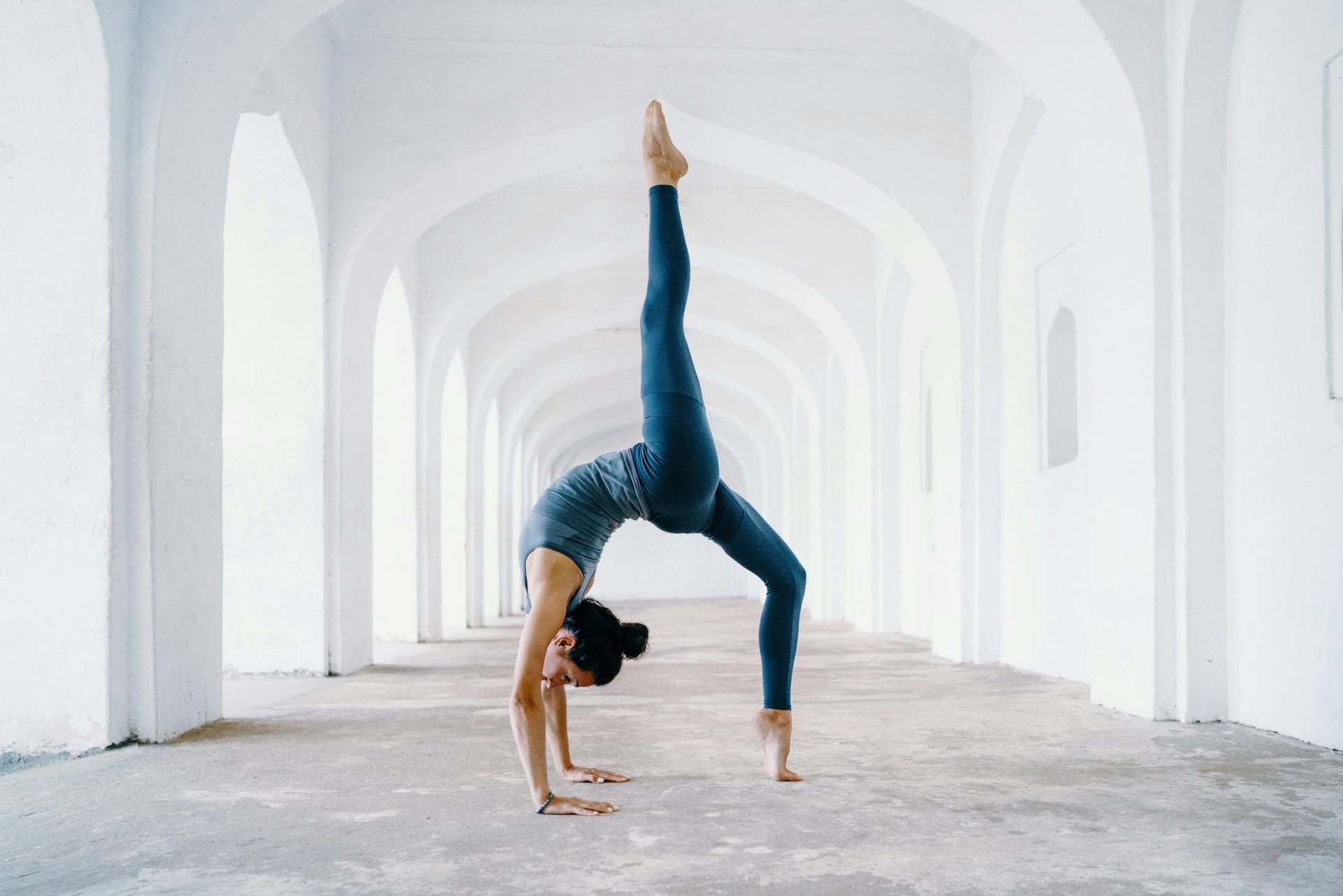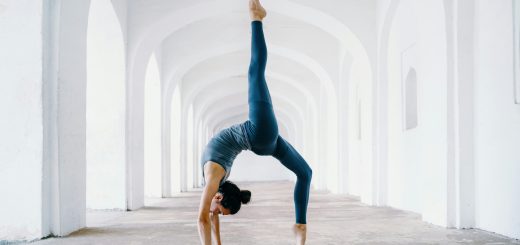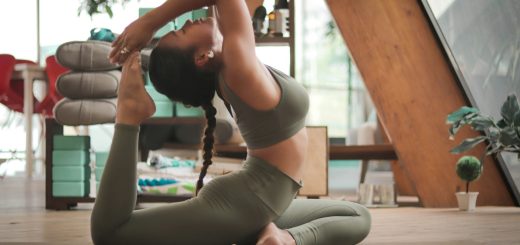How to Do Yoga: A Beginner’s Guide to Starting Your Practice

Hey there, amazing readers! 🖐️ Just a quick note: yes, we know there are a lot of ads here. Trust us, we get it—it’s not the prettiest look, but they help us keep this blog alive and kicking. Those pesky little ads cover the costs of all the behind-the-scenes magic, from hosting and tech stuff to creating content we hope you’ll love.
We’re committed to delivering quality posts, and your support (even just sticking around despite the ads) means everything to us. So, bear with us, and thanks for helping us keep the good vibes rolling. Now, on to the fun stuff! 😉
TRANSLATE BUTTON AT THE END OF THE ARTICLE
A Quick Overview
Starting your yoga journey can feel like a big leap, but it doesn’t have to be intimidating.
Whether you’re looking to improve flexibility, reduce stress, or find a space for inner peace, yoga offers a treasure trove of benefits.
I’m here to share with you an approachable guide that will walk you through the steps to begin your yoga practice.
From understanding the basics to creating a personalized space at home, let’s dive into this adventure together!
Welcome to Yoga: Embrace a New Journey Ahead!
Yoga is more than just a series of poses; it’s a way to connect your mind, body, and spirit.
As you step onto your mat, I encourage you to adopt a mindset of curiosity and openness.
This journey will transform not only how you move but how you perceive your life and surroundings.
Starting something new can bring up mixed feelings.
Excitement, anxiety, and a sprinkle of doubt can all surface.
Trust me, I’ve been there!
Remember, every expert was once a beginner.
Yoga welcomes everyone, no matter your age, size, or fitness level.
So, take a deep breath in, and let’s embark on this new chapter filled with growth and self-discovery.
As you begin, be gentle with yourself.
Celebrate small wins, whether that’s mastering a pose or simply showing up on the mat.
It’s all part of the journey.
Think of yoga as a friend who will always be there, ready to support you through thick and thin.
Understanding Yoga: What It Is and Its Benefits
At its core, yoga is an ancient practice that combines physical postures, breath control, and meditation.
It originated in India over 5,000 years ago and has since traveled the globe, evolving in various forms.
But what makes it so special?
Here are some benefits of yoga that I find particularly compelling:
Improved Flexibility: Regular practice stretches and tones your body, increasing your overall flexibility over time.
Enhanced Strength: Many poses engage multiple muscle groups, boosting your strength and coordination.
Stress Reduction: Yoga promotes relaxation and reduces stress levels through mindful breathing and meditation.
Better Posture: The awareness developed during yoga translates into better posture in daily life.
Increased Focus: The combination of breathwork and meditation sharpens your mental clarity and concentration.
Emotional Balance: Yoga encourages you to connect with your emotions, fostering self-acceptance and mindfulness.
Pain Relief: Many practitioners find relief from chronic pain, including back issues and headaches.
Improved Sleep: The calming effects of yoga can lead to better sleep quality and duration.
Community Connection: Joining a yoga class can foster a sense of belonging and community.
Self-Discovery: Yoga encourages introspection, helping you understand yourself on a deeper level.
When you start practicing, you might notice these benefits unfold naturally.
It’s like finding a hidden gem in the ordinary!
Choosing the Right Yoga Style for You
With various yoga styles available, it can be overwhelming to select the one that suits you best.
Here’s a breakdown of some popular styles:
Hatha Yoga: Great for beginners, Hatha focuses on basic poses and breathing techniques.
It’s generally slower-paced, making it easy to follow.
Vinyasa Yoga: This style links breath with movement, creating a flow of poses.
It’s dynamic and can be more challenging, but it’s a great way to build strength and flexibility.
Yin Yoga: A slower practice that involves holding poses for longer durations.
It targets deep connective tissues and is perfect for relaxation.
Ashtanga Yoga: A rigorous style involving a set sequence of poses.
It’s physically demanding but rewarding once you get the hang of it.
Restorative Yoga: A gentle practice that uses props to support the body.
It’s ideal for deep relaxation and stress relief.
Try a few classes or online tutorials to see which style resonates with you.
Remember, it’s all about what feels good for your body and mind.
Essential Gear: What You Need to Start Practicing
You don’t need fancy gear to get started with yoga.
In fact, less is often more!
Here’s a list of essentials that can make your practice comfortable and enjoyable:
Yoga Mat: A good quality mat provides traction and cushioning.
Look for one that suits your style, whether it’s thicker for comfort or thinner for balance.
Comfortable Clothing: Wear breathable, stretchy clothing that allows freedom of movement.
Think leggings, tank tops, or shorts.
Yoga Blocks: These props can help you reach the floor more easily in certain poses and provide stability.
Straps: Perfect for stretching and achieving better alignment in poses, especially for beginners.
Water Bottle: Stay hydrated!
Water is essential, especially if you’re practicing a more intense style.
Towel: Useful for wiping off sweat, particularly in hot yoga classes.
Meditation Cushion: If you plan to incorporate meditation, a cushion can make sitting more comfortable.
Gathering these items will set you up for success.
Just remember, the most important gear is your willingness to learn and grow!
Creating Your Perfect Yoga Space at Home
Having a designated space for yoga can enhance your practice.
Here are some tips to create a cozy and inviting environment:
Choose a Quiet Area: Find a spot in your home that’s away from distractions.
A corner of your living room or a specific room can work wonders.
Declutter: Clear away unnecessary items.
A tidy space promotes a clear mind.
Add Some Decor: Personalize your space with plants, candles, or soothing artwork.
These elements can create a peaceful atmosphere.
Control the Light: Soft lighting can enhance relaxation.
If possible, practice during the day when natural light is available.
Use Soft Fabrics: Consider having a soft blanket or cushion nearby to make your space feel cozy.
Play Calming Music: If you enjoy music while practicing, create a playlist of gentle tunes to uplift your spirit.
Incorporate Aromatherapy: Essential oils or incense can create a calming ambiance.
Lavender or sandalwood are my favorites!
Limit Distractions: Make it a rule to turn off your phone or leave it in another room while you practice.
Your yoga space should be a sanctuary—a place where you can escape, breathe, and connect with yourself.
Starting with the Basics: Simple Poses for Beginners
When you’re ready, it’s time to explore some foundational poses that are great for beginners.
Here are a few to get started:
Mountain Pose (Tadasana): Stand tall with feet together, arms by your sides.
Ground yourself and feel the stability beneath you.
Downward-Facing Dog (Adho Mukha Svanasana): Start on all fours, lift your hips, and straighten your arms and legs.
It’s a rejuvenating stretch for the entire body.
Child’s Pose (Balasana): Kneel and sit back on your heels, stretching your arms forward.
This is a great resting pose that promotes relaxation.
Cat-Cow Stretch (Marjaryasana-Bitilasana): Alternate between arching your back (cat) and lifting your head and tailbone (cow) while on all fours.
This feels fantastic on the spine!
Warrior I (Virabhadrasana I): Stand tall and step one foot back while bending the front knee.
Reach your arms overhead.
Feel empowered!
Tree Pose (Vrksasana): Stand on one leg, placing the other foot on your inner thigh.
Find your balance and connect with your inner strength.
Seated Forward Bend (Paschimottanasana): Sit with legs extended in front.
Hinge at your hips and reach forward.
This poses calms the mind while stretching the hamstrings.
Corpse Pose (Savasana): Lie flat on your back, arms at your sides.
This closing pose allows you to absorb the benefits of your practice.
Practice these poses regularly, focusing on alignment and breath.
Progress may be slow, but every small step counts!
Breathwork 101: The Importance of Pranayama
Breath is the essence of yoga.
Practicing pranayama (breath control) is vital for enhancing your practice.
Here are some fundamental techniques:
Diaphragmatic Breathing: Place one hand on your chest and the other on your belly.
Inhale deeply through your nose, letting your belly rise.
Exhale slowly.
This encourages relaxation and enhances lung capacity.
Alternate Nostril Breathing (Nadi Shodhana): Close one nostril with your finger, inhale deeply through the open one, then switch nostrils and exhale.
This technique balances the mind and promotes clarity.
Ujjayi Breath: Also known as ocean breath, this involves slightly constricting your throat while breathing.
It creates a calming sound that can guide your focus during practice.
Box Breathing: Inhale for four counts, hold for four counts, exhale for four counts, and hold again for four counts.
This technique can ease anxiety and promote mindfulness.
Humming Bee Breath (Bhramari): Inhale deeply and hum on the exhale.
This vibration soothes the mind and body.
Integrating breathwork into your practice can deepen your experience and enhance your connection to meditation.
When you focus on your breath, you bring awareness to the present moment.
Finding Online Classes: Resources for Your Practice
Nowadays, there’s a plethora of online resources available for yoga enthusiasts.
Here are a few platforms I recommend:
YouTube: Channels like Yoga with Adriene and Fightmaster Yoga offer free classes for all levels.
Yoga Apps: Apps like Down Dog, Daily Burn, or Glo provide structured classes and tutorials tailored to your level.
Streaming Services: Many fitness platforms offer yoga classes as part of their subscription.
Check out Peloton or Beachbody.
Online Yoga Studios: Websites such as Yoga International and Alo Moves offer comprehensive libraries of classes and workshops.
Social Media: Follow yoga instructors on Instagram or TikTok for short videos and tips.
They often share valuable insights and challenges!
Trying different instructors and classes can help you find your rhythm.
Find a class that resonates with you, and don’t hesitate to explore various teaching styles.
Tips for Staying Consistent in Your Yoga Routine
Staying committed can be challenging, especially with our busy lives.
Here are some strategies that have helped me maintain consistency in my practice:
Set a Schedule: Treat your yoga practice like an appointment.
Pick specific days and times that work for you.
Start Small: Even a short practice of 10-15 minutes counts.
Gradually increase your time as you become more comfortable.
Join a Challenge: Participate in online yoga challenges to keep you motivated and accountable.
Keep Your Mat Visible: Roll out your mat in a visible spot to serve as a reminder to practice.
Practice Mindfulness: Focus on how yoga makes you feel.
Embrace the positive vibes it brings into your life.
Find a Buddy: Invite a friend to join your practice, either in person or virtually.
It can turn your sessions into fun hangouts!
Track Your Progress: Keep a journal to track what you practice and how you feel afterwards.
Reflecting on your progress can be incredibly motivating.
Be Kind to Yourself: Remember that some days will be better than others.
Don’t beat yourself up if you miss a session.
Consistency doesn’t mean being perfect.
It’s about showing up and enjoying the journey.
Overcoming Common Yoga Challenges as a Newbie
As you embark on your yoga journey, you may encounter some roadblocks.
Here’s how to tackle common challenges:
Flexibility: Don’t worry if you can’t touch your toes right away!
Yoga is about progress, not perfection.
Consistent practice will gradually increase your flexibility.
Balance: Wobbly poses are totally normal.
Engage your core and focus on a fixed point in front of you to improve your balance.
Intimidation: It’s easy to feel overwhelmed by advanced practitioners.
Remember, everyone starts somewhere.
Focus on your own progress!
Discomfort: Listen to your body.
If a pose feels painful, ease out of it.
Modify poses as needed—yoga is about finding what works for you.
Time Constraints: Life can get busy, but even short sessions can be beneficial.
Make peace with whatever time you can carve out.
Challenges are part of growth.
Embrace them, learn from them, and keep pushing forward.
Exploring Meditation: A Complement to Your Practice
Meditation beautifully complements yoga and can enhance your experience.
It invites you to delve deeper into self-awareness.
Here’s how to get started:
Start with Guided Meditations: There are plenty of apps like Headspace or Calm that offer guided sessions for beginners.
Set a Timer: Start with just a few minutes daily, gradually extending the time as you become more comfortable.
Focus on Your Breath: Use your breath as an anchor during meditation.
Whenever your mind wanders, gently bring your focus back to your breath.
Explore Different Techniques: Try mindfulness, loving-kindness meditation, or visualization.
Find what resonates with you.
Be Patient: Meditation can feel challenging at first.
Don’t judge yourself—just observe your thoughts without attachment.
Integrating meditation into your routine can amplify the benefits of yoga, leading to a more comprehensive experience of self-discovery and mindfulness.
Celebrating Your Progress: Enjoying Your Yoga Journey!
As you move along your yoga path, take moments to celebrate your growth.
Recognize the small victories, whether mastering a pose, reducing stress, or simply feeling more connected with yourself.
Keep a Journal: Document your thoughts, feelings, and experiences.
Revisit your entries to see how far you’ve come!
Reward Yourself: Treat yourself to a new yoga mat or comfortable clothes when you reach a milestone.
Share with Friends: Talk about your journey with friends or family.
Sharing your experiences can inspire others and reinforce your commitment.
Reflect on Your Journey: Each practice is a step forward.
Take a moment to express gratitude for your body and its abilities.
Every session on the mat is a chance to reconnect with yourself.
Embrace this journey and enjoy the process.
Conclusion
Starting your yoga practice is an enriching journey—one filled with self-discovery, growth, and connection.
From understanding the benefits to finding the right resources, I hope this guide has equipped you with the tools to kickstart your adventure.
Remember, it’s about progress, not perfection.
Allow yourself the grace to learn and grow.
Celebrate every small victory, and don’t hesitate to invite others along for the ride.
Yoga is not just about the poses; it’s about the journey within.
So, roll out your mat, breathe deeply, and enjoy every moment of this beautiful practice!

The Enlightenment Journey is a remarkable collection of writings authored by a distinguished group of experts in the fields of spirituality, new age, and esoteric knowledge.
This anthology features a diverse assembly of well-experienced authors who bring their profound insights and credible perspectives to the forefront.
Each contributor possesses a wealth of knowledge and wisdom, making them authorities in their respective domains.
Together, they offer readers a transformative journey into the realms of spiritual growth, self-discovery, and esoteric enlightenment.
The Enlightenment Journey is a testament to the collective expertise of these luminaries, providing readers with a rich tapestry of ideas and information to illuminate their spiritual path.
Our Diverse Expertise 🌟
While our primary focus is on spirituality and esotericism, we are equally passionate about exploring a wide range of other topics and niches 🌍📚. Our experienced team is dedicated to delivering high-quality, informative content across various subjects ✨.
To ensure we provide the most accurate and valuable insights, we collaborate with trusted experts in their respective domains 🧑🏫👩🏫. This allows us to offer well-rounded perspectives and knowledge to our readers.
Our blog originally focused on spirituality and metaphysics, but we’ve since expanded to cover a wide range of niches. Don’t worry—we continue to publish a lot of articles on spirituality! Frequently visit our blog to explore our diverse content and stay tuned for more insightful reads.






